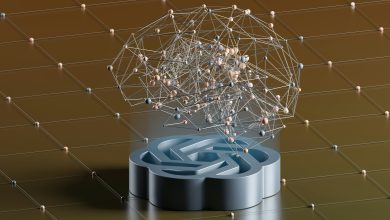
AI is revolutionising industries with speed, scale, and efficiency. But when it comes to deeply human services, like estate planning, those qualities aren’t enough. Here, trust, empathy and discretion aren’t just important; they’re foundational. So, the question isn’t can AI be used. It’s how.
Estate planning sits at a complex intersection of legal, financial, and emotional factors. People engage with it during some of life’s hardest moments: the loss of a loved one, a big family shift, or when planning for the inevitable. In these times, technology should never try to replace human understanding; it should quietly support and amplify it.
AI should be treated not as a substitute for human connection but as infrastructure that supports professionals by freeing up time and sharpening insights. The right tools can make routine tasks more efficient, improve accuracy, and surface insights faster, so that professionals can show up with even more care, thoughtfulness, and precision. By streamlining admin and scaling expertise, AI helps people in this sector focus on what matters most: guiding families through legacy decisions with compassion.
AI Agents: Precision at Scale
When deployed responsibly, AI agents bring a new level of consistency, scale, and contextual intelligence to estate planning. Unlike conventional programming, AI agents evolve with increasing context capable of:
- Building a real-time picture of events using numerous data sources
- Reasoning over complex legal and relational data
- Acting to achieve predefined objectives without continuous manual prompting
Our AI agent, RADAR, was born from a real problem: wills that go untouched for years. Life changes, documents don’t. The result? More stress for families at the worst possible time.
RADAR monitors in near real-time our will bank using structured tagging and entity recognition to identify life events, financial changes, or legal risk factors. These signals are fed into our CRM, automatically triggering personalised outreach. RADAR uses semantic analysis to assess context, prioritise urgency, and propose next-best actions for our team. The result:
- Team capacity doubled
- Daily contact rates up 22%
- More timely, relevant, and compassionate client conversations
This kind of agentic AI architecture, where multiple specialised sub-agents handle data parsing, risk analysis, and client insight generation, demonstrates how estate planning can begin to shift from reactive to proactive care. Instead of waiting for families to reach out in moments of difficulty, practitioners can anticipate needs and support them before problems escalate.
The New Co-Pilots in Drafting
Like many businesses in this sector, we are now developing AI tools powered by autonomous Large Language Models (LLMs). Unlike traditional LLMs that respond only to user prompts, autonomous LLMs run self-directed control loops:
- Plan: Break complex tasks into multi-step goals
- Act: Use integrated tools and databases to gather missing information
- Reflect: Critically evaluate their own outputs against legal standards
- Revise: Iterate until the output meets quality and compliance thresholds
In the will-drafting process, this means:
- Capturing the full detail of client conversations with automatic entity extraction
- Making notes easily searchable through vector embeddings
- Detecting gaps or inconsistencies using logical inference and rule-based checks
- Suggesting relevant clauses based on both precedent and semantic similarity
- Flagging possible risks such as mental capacity concerns or coercion indicators
By blending neural language generation with symbolic legal reasoning, these systems are not designed to replace the expertise of a solicitor. Instead, they extend it. Professionals can spend less time on mechanical checks and more time on sensitive conversations, navigating complex family dynamics, and guiding clients through deeply personal decisions.
Not Everything Needs an Avatar
In some industries, AI’s most visible role is customer-facing: chatbots, virtual assistants, voice agents. But in estate planning, that can feel tone-deaf. The stakes are too high, the emotions too complex. AI should be infrastructure, not interface — empowering humans, not impersonating them.
AI as a Compassion Enabler
Estate planning is, and always should be, person-led. But the right tools — AI agents, autonomous LLM workflows, and predictive analytics — can serve as compassion enablers. They reduce the friction of process, so professionals can spend less time battling systems and more time supporting people when they need it most.
In the future, it’s not hard to imagine consultations that unfold without long forms or repetitive data entry. Instead, information could be surfaced automatically, freeing professionals to focus on a more natural, human conversation. For clients, that means clearer explanations, less bureaucracy, and more space to reflect on decisions that carry deep personal meaning.
The question for the industry is no longer whether to use AI, but how. The real measure of innovation isn’t speed or volume. It’s whether we are improving human experiences: making them clearer, calmer, and kinder.
The future of estate planning will be data-informed but must remain emotion-led. AI belongs behind the curtain, quietly enabling sharper workflows, deeper insights, and better timing, while empathy remains front and centre. Because in the end, it’s still people who carry the real weight.




